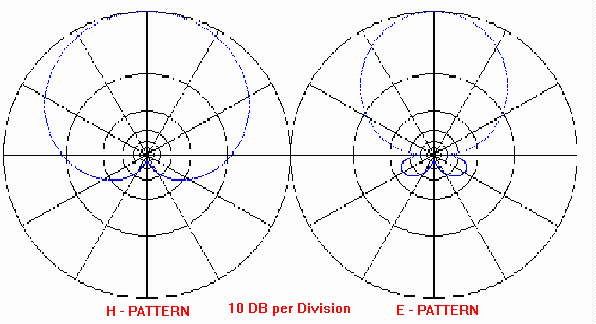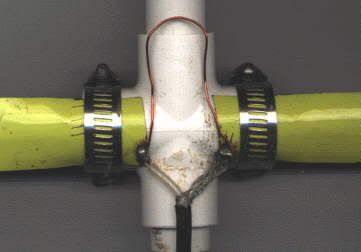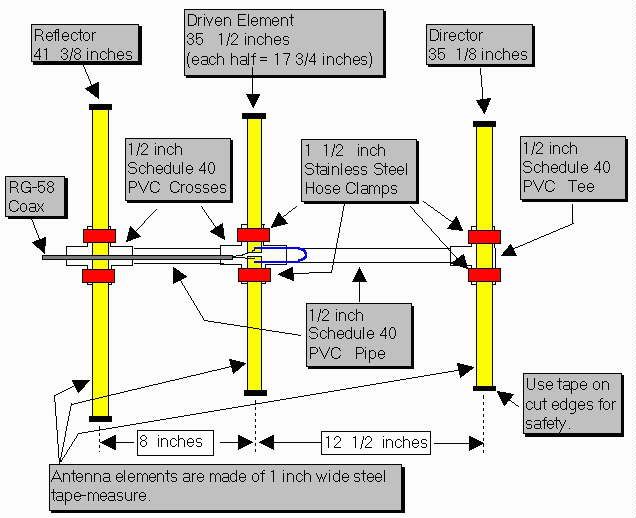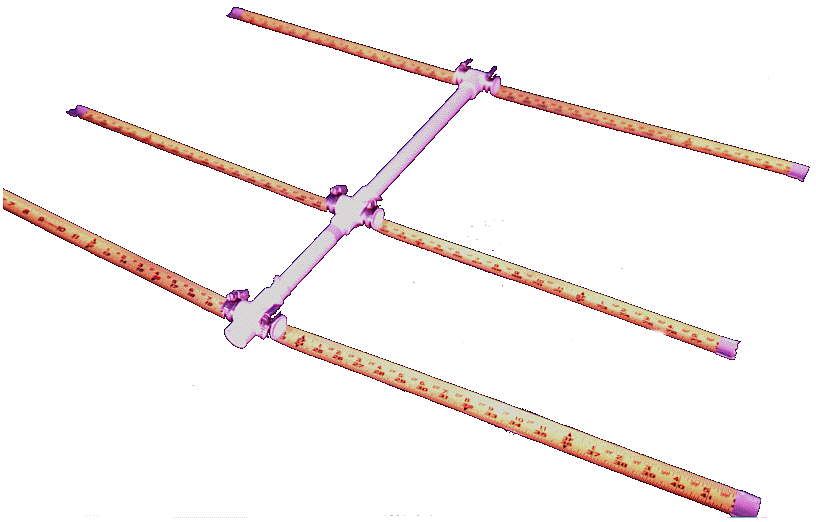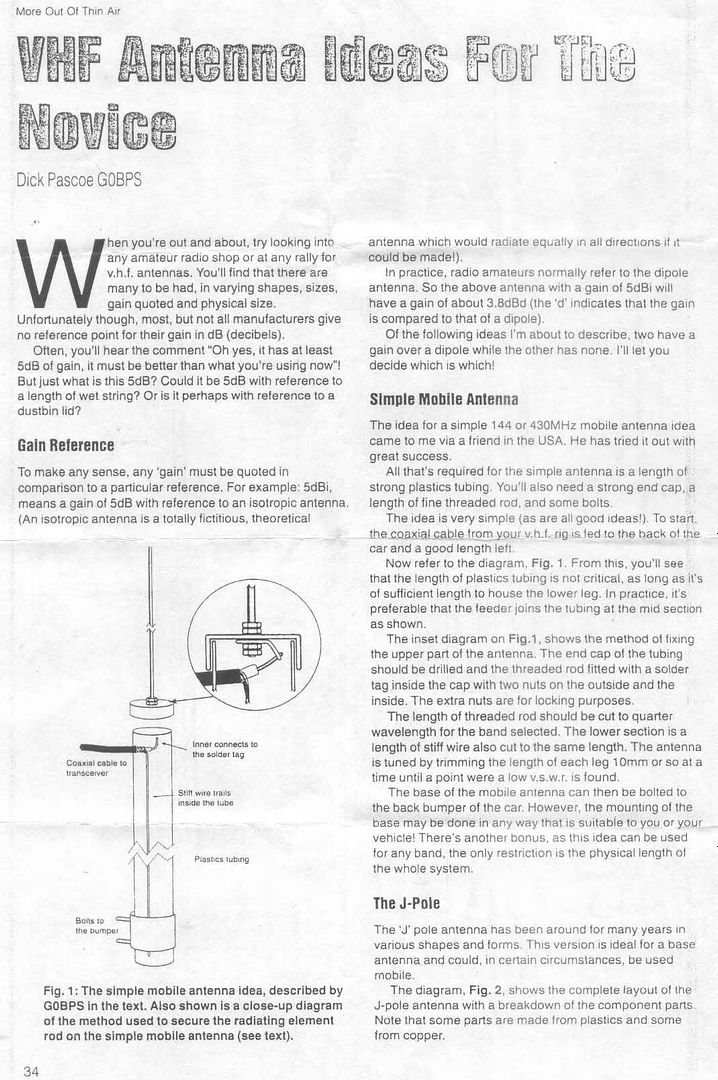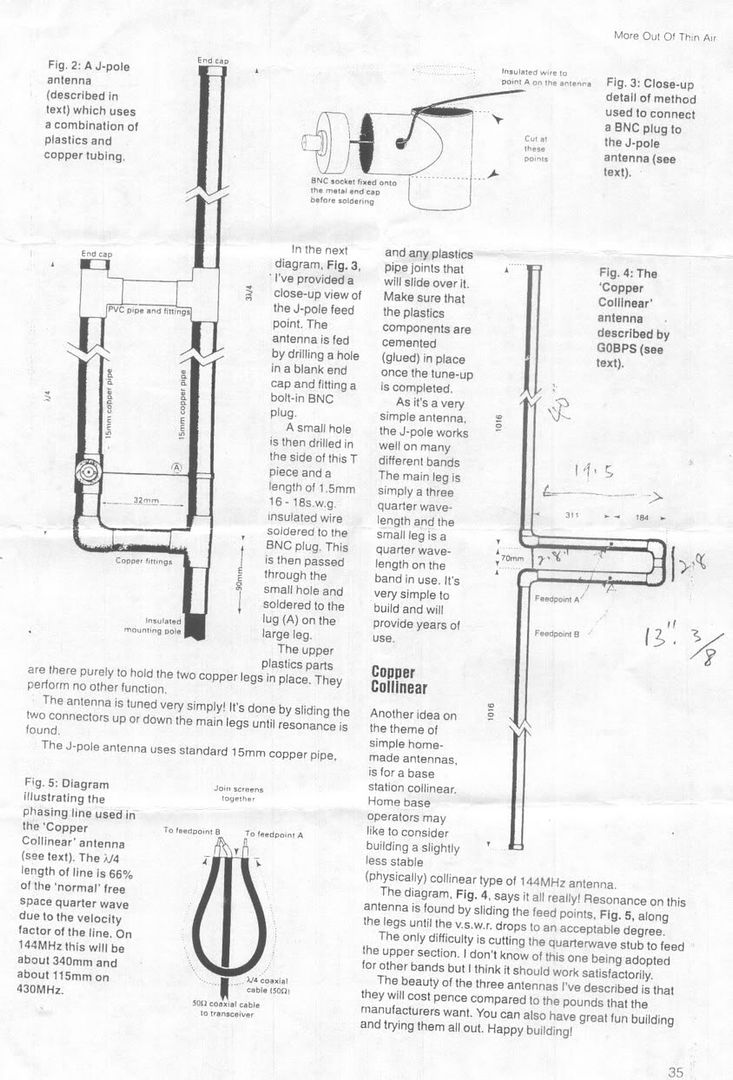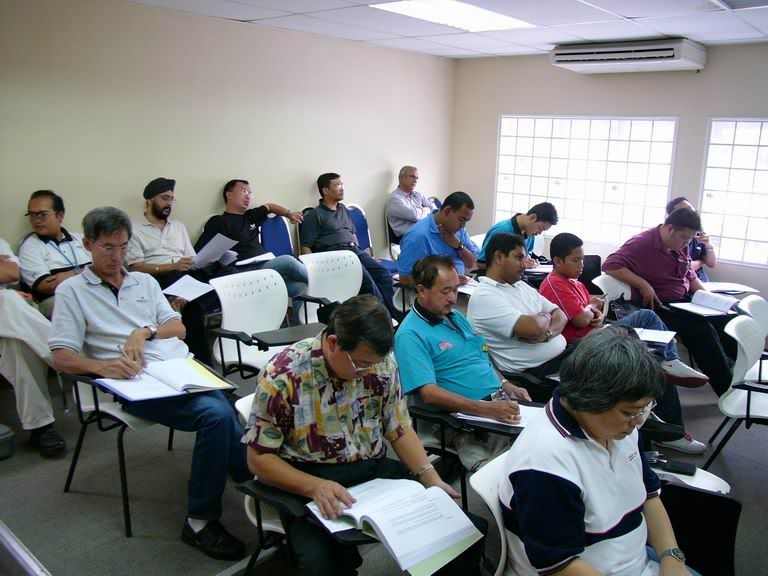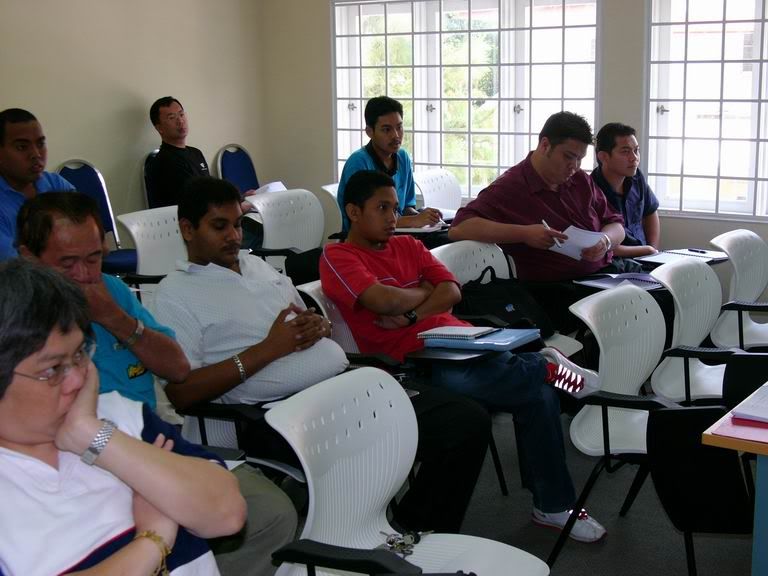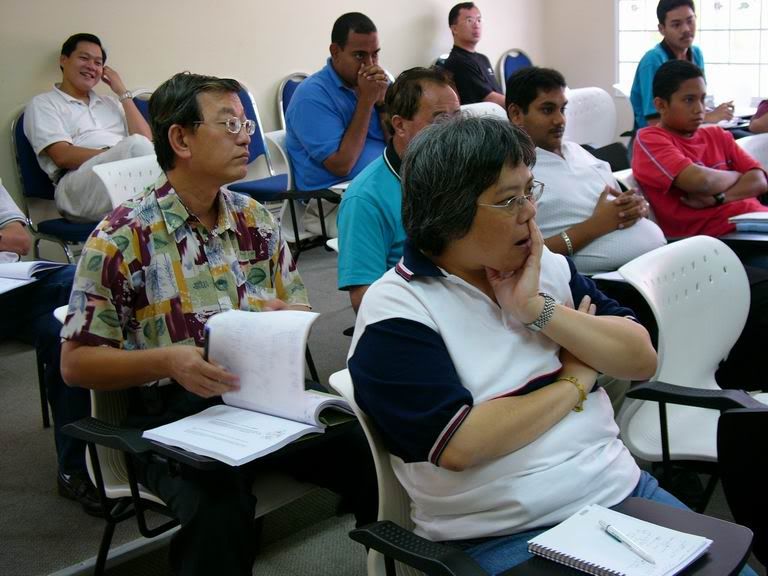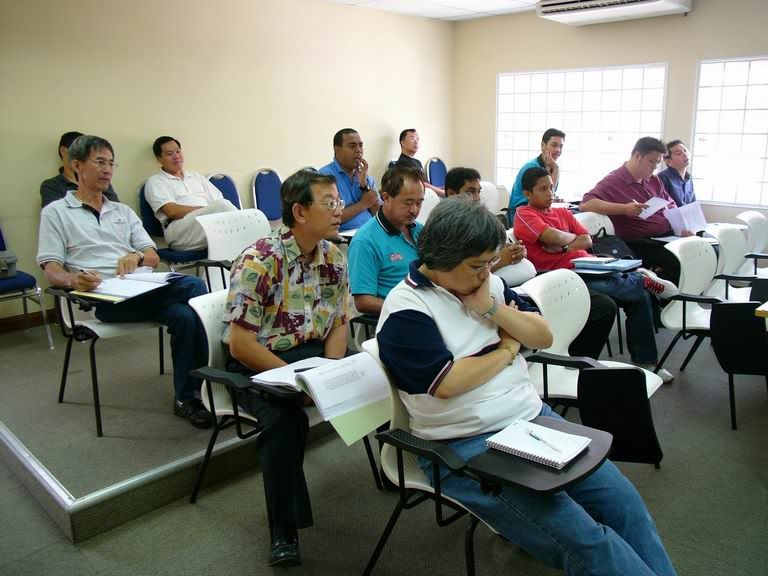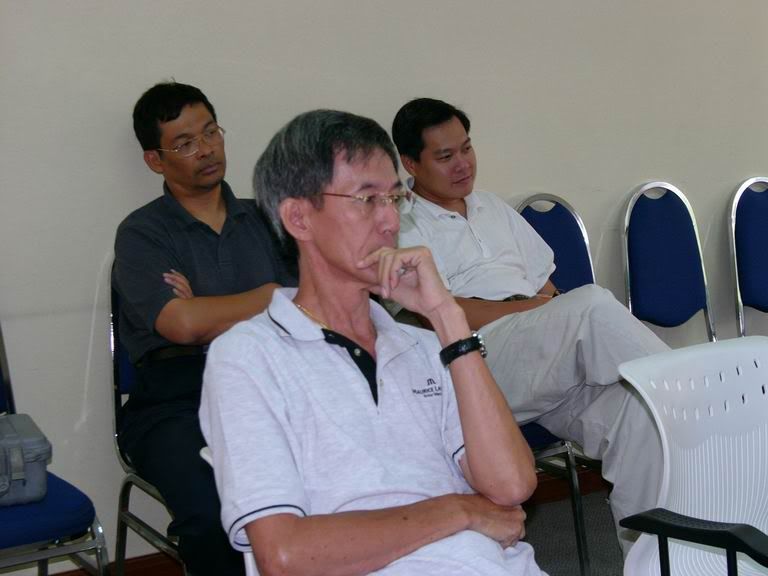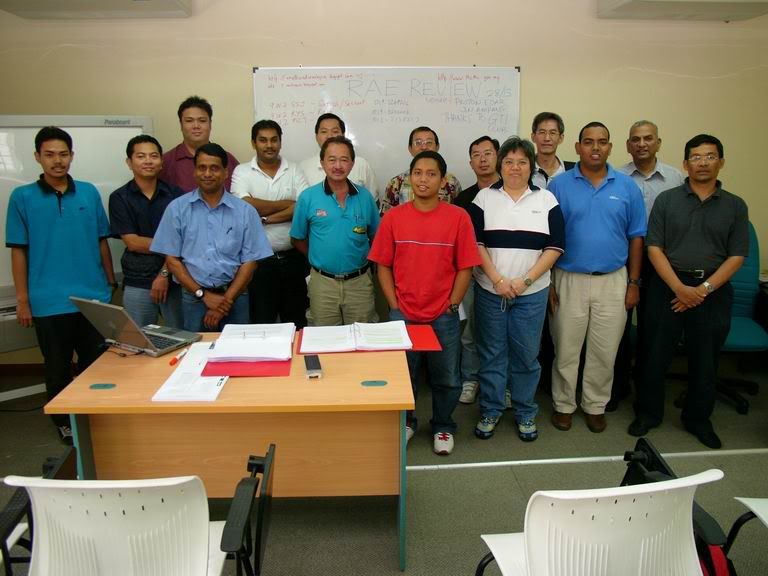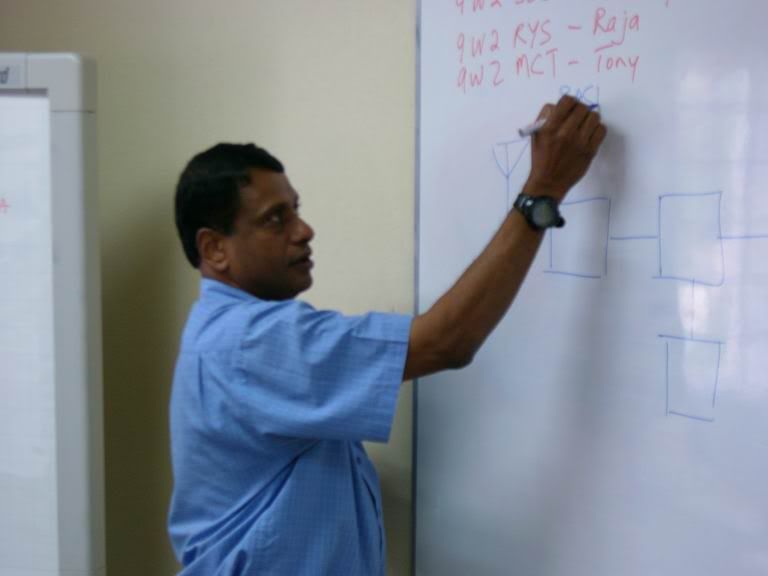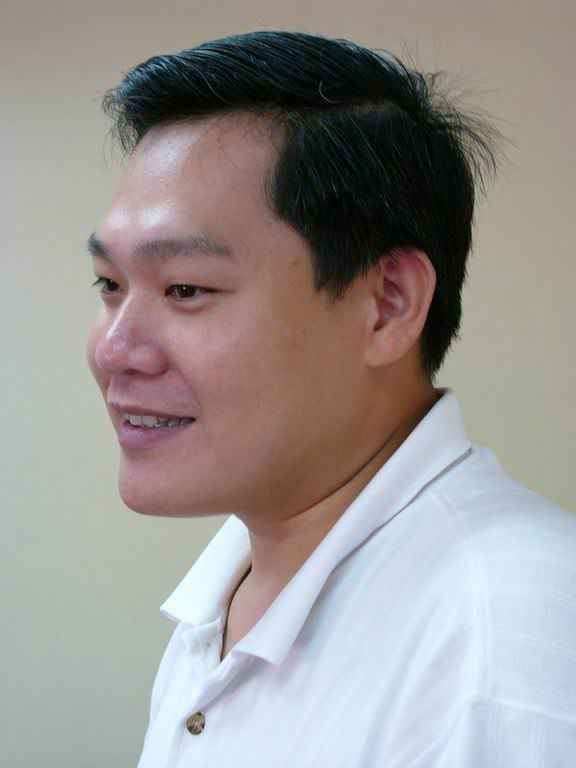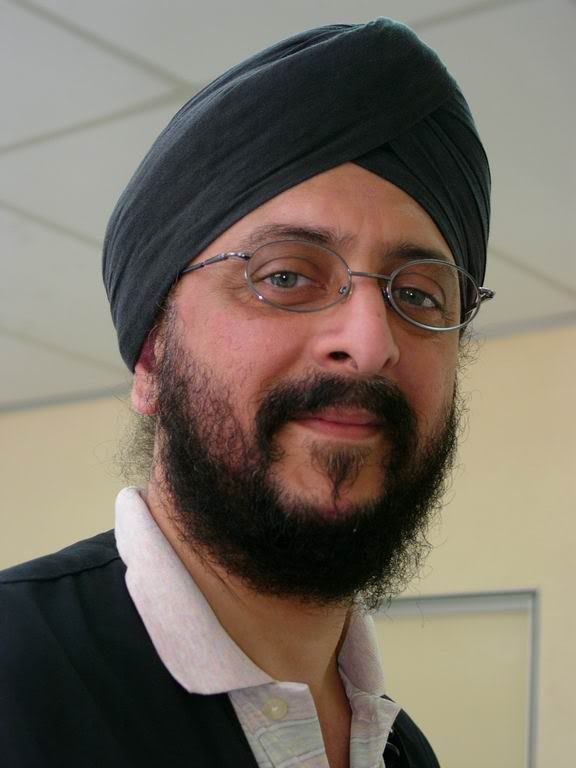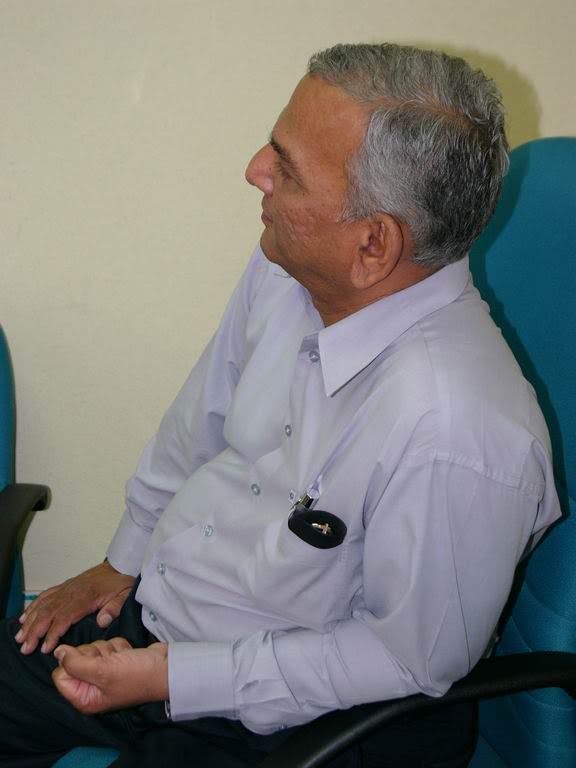This is the sample Test that we used during the 1 day RAE Revision Class on the 28May05.
Total
50 questions and passing marks is
50 %.
1. The Amateur Service may be briefly defined as:
a. a private radio service for personal gain and public benefit
b. a public radio service used for public service communications
c. a radiocommunication service for the purpose of self training, intercommunication and technical investigation
d. a private radio service intended only for emergency communications
2. For regulatory purposes the world is divided into regions each with different radio spectrum allocations.Malaysia is in :
a. Region 1
b. Region 2
c. Region 3
d. Region 4
3. An amateur radio licence can be inspected by an authorised officer from the MCMC
a. at any time
b. on any business day
c. before 9 p.m.
d. only on public holidays
4. You must have an amateur radio licence to:a. transmit on public-service frequencies
b. retransmit shortwave broadcasts
c. repair radio equipment
d. transmit in bands allocated to the Amateur Service
5. A Malaysia amateur radio licence allows you to operate:
a. anywhere in the world
b. anywhere in Malaysia and in any other country that has a reciprocal recognition of the licence
c. within 50 km of your home station location
d. only at your home address
6. With an amateur radio licence, you may operate transmitters in your station:
a. one at a time
b. one at a time, except for emergency communications
c. any number at one time
d. any number, so long as they are transmitting on different bands
7. You must keep the following document at your amateur station:a. your amateur radio licence with its attached schedule
b. a copy of the Rules and Regulations for the Amateur Service
c. a copy of the Radio Amateur's Handbook for instant reference
d. a chart showing the amateur radio bands
8. An Amateur Station is one which is:
a. licensed by the MCMC to operate on the amateur radio bands
b. owned and operated by a person who is not engaged professionally in radio communications
c. used exclusively to provide two-way communication in connection with activities of amateur sporting organizations
d. used primarily for emergency communications during floods, earthquakes and similar disasters.
9. If the licensed operator of an amateur radio station is absent overseas, the home station may be used by:
a. any member of the immediate family to maintain contact with only the licensed operator
b. any person with an appropriate amateur radio licence
c. the immediate family to communicate with any amateur radio operator
d. the immediate family if a separate licence for mobile use has been obtained by the absent operator
10. Before operating an amateur station in a motor vehicle, you must:
a. give the JPJ vehicle's licence plate number
b. inform the MCMC
c. hold a current amateur radio licence
d. obtain an additional licence and callsign
11. If you transmit from another amateur's station, the person responsible for its proper operation is:
a. both of you
b. the other amateur (the station licensee)
c. you, the operator
d. the station licensee, unless the station records show that you were the operator at the time
12. A log-book for recording amateur stations being operated:a. is compulsory for every amateur radio operator
b. is recommended for all amateur radio operators
c. must list all messages sent
d. must record time in UTC
13. The minimum age for a person to appy for an RAE Licence is:
a. 12 years
b. 16 years
c.14 years
d. there is no age limit
14. If you contact another station and your signal is strong and perfectly readable, you should:
a. turn on your speech processor
b. reduce your SWR
c. not make any changes, otherwise you may lose contact
d. reduce your transmitter power output to the minimum needed to maintain contact
15. Peak envelope power (PEP) output for VHF Class B licence is :
a. 40W
b. 50W
c. 30W
d. 25W
16.You identify your amateur station by transmitting your:
a. "handle"
b. callsign
c. first name and your location
d. full name
17. These letters are used for Malaysian Callsignsa. 9W
b. 9R
c. 9K
d. 9U
18. To remain current, an amateur radio licence fee must be paid:a. every 6 months up to 1 year
b. every year for a max of 5 years
c. once every 5 years
d. one fee lasts for life
19. Messages from an amateur station in one of the following are expressly forbidden:a. ASCII
b. International No. 2 code
c. Baudot code
d. secret cipher
20. The term "harmful interference" means:
a. interference which obstructs or repeatedly interrupts radiocommunication services
b. an antenna system which accidentally falls on to a neighbour's property
c. a receiver with the audio volume unacceptably loud
d. interference caused by a station of a secondary service
21. When interference to the reception of radiocommunications is caused by the operation of an amateur station, the station operator:
a. must immediately comply with any action required by the MCMC to prevent the interference b. may continue to operate with steps taken to reduce the interference when the station operator can afford it
c. may continue to operate without restrictions
d. is not obligated to take any action
22. An amateur radio operator may knowingly interfere with another radio communication or signal:
a. when the operator of another station is acting in an illegal manner
b. when another station begins transmitting on a frequency you already occupy
c. never
d. when the interference is unavoidable because of crowded band conditions
23. The element Silicon is:a. a conductor
b. an insulator
c. a superconductor
d. a semiconductor
24. These magnetic poles repel:
a. unlike
b. like
c. positive
d. negative
25. This material is better for making a permanent magnet:
a. steel
b. copper
c. aluminium
d. soft iron
26. The term describing opposition to electron flow in a metallic circuit is:a. current
b. voltage
c. resistance
d. power
27. Three good electrical conductors are:a. copper, gold, mica
b. gold, silver, wood
c. gold, silver, aluminium
d. copper, aluminium, paper
28. The name for the flow of electrons in an electric circuit is:
a. voltage
b. resistance
c. capacitance
d. current
29. One kilohm is:
a. 10 ohm
b. 0.01 ohm
c. 0.001 ohm
d. 1000 ohm
30. The watt is the unit of:a. power
b. magnetic flux
c. electromagnetic field strength
d. breakdown voltage
31. The unit for potential difference between two points in a circuit is the:a. ampere
b. volt
c. ohm
d. coulomb
32. The unit of resistance is the:
a. farad
b. watt
c. ohm
d. resistor
33. The voltage across a resistor carrying current can be calculated using the formula:
a. E = I + R [voltage equals current plus resistance]
b. E = I - R [voltage equals current minus resistance]
c. E = I x R [voltage equals current times resistance]
d. E = I / R [voltage equals current divided by resistance]
34. I = E/R is a mathematical equation describing:
a. Ohm's Law
b. Thevenin's Theorem
c. Kirchoff's First Law
d. Kirchoff's Second Law
35. A current of 2 ampere flows through a 16 ohm resistance. The applied voltage is:
a. 8 volt
b. 14 volt
c. 18 volt
d. 32 volt
36. When an 8 ohm resistor is connected across a 12 volt supply the current flow is:
a. 12 / 8 amps
b. 8 / 12 amps
c. 12 - 8 amps
d. 12 + 8 amps
37. The total resistance of several resistors connected in series is:
a. less than the resistance of any one resistor
b. greater than the resistance of any one resistor
c. equal to the highest resistance present
d. equal to the lowest resistance present
38. Five 10 ohm resistors connected in series give a total resistance of:
a. 1 ohm
b. 5 ohms
c. 10 ohms
d. 50 ohms
39. The correct name for the equivalent of 'one cycle per second' is one:
a. henry
b. volt
c. hertz
d. coulomb
40. One megahertz is equal to:
a. 0.0001 Hz
b. 100 kHz
c. 1000 kHz
d. 10 Hz
41. The total capacitance of two or more capacitors in series is:
a. always less than that of the smallest capacitor
b. always greater than that of the largest capacitor
c. found by adding each of the capacitances together
d. found by adding the capacitances together and dividing by their total number
42. Filter capacitors in power supplies are sometimes connected in series to:
a. withstand a greater voltage than a single capacitor can withstand
b. increase the total capacity
c. reduce the ripple voltage further
d. resonate the filter circuit
43. A radio component is identified as a capacitor if its value is measured in:
a. microvolts
b. millihenrys
c. megohms
d. microfarads
44. Three 15 picofarad capacitors are wired in parallel. The value of the combination is:
a. 45 picofarad
b. 18 picofarad
c. 12 picofarad
d. 5 picofarad
45. Increasing the number of turns on an inductor will make its inductance:
a. decrease
b. increase
c. remain unchanged
d. become resistive
46. The unit of inductance is the:
a. farad
b. henry
c. ohm
d. reactance
47. Two 20 uH inductances are connected in series. The
total inductance is:
a. 10 uH
b. 20 uH
c. 40 uH
d. 80 uH
48. You can safely remove an unconscious person from contact with a high voltage source by:
a. pulling an arm or a leg
b. wrapping the person in a blanket and pulling to a safe area
c. calling an electrician
d. turning off the high voltage and then removing the person
49. For your safety, before checking a fault in a mains operated power supply unit, first:
a. short the leads of the filter capacitor
b. turn off the power and remove the power plug
c. check the action of the capacitor bleeder resistance
d. remove and check the fuse in the power supply
50. In the transmitter, the "VFO" is a :
a. voice frequency oscillator
b. varactor fixed oscillator
c. virtual faze oscillator
d. variable frequency oscillator
